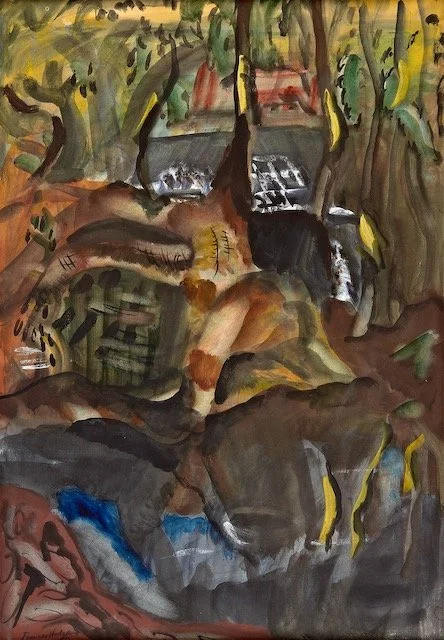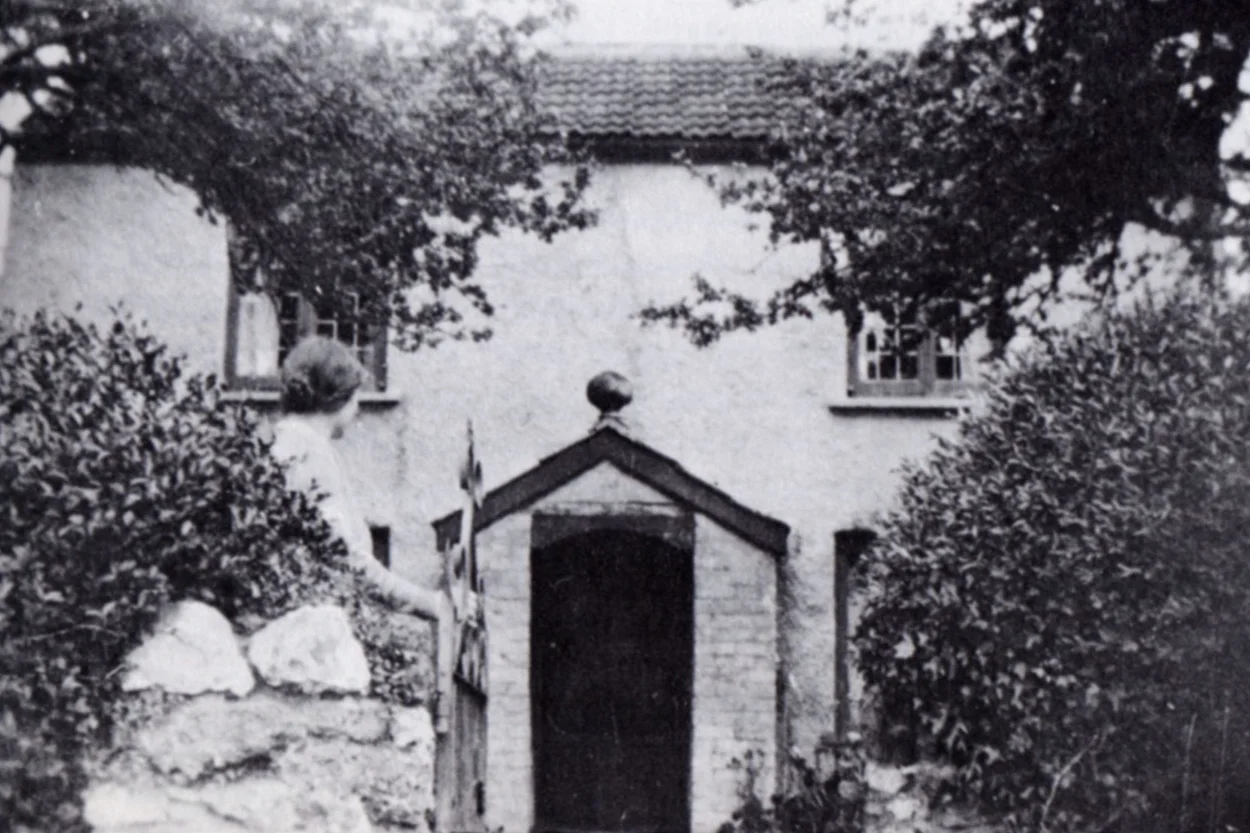In June 2017 Jonathan Gooderham set out for Somerset to locate Geoffrey Gorer’s cottage and the weir on the River Tone, depicted in Hodgkins painting River Tone, Somerset c. 1939, pictured above.
Armed with an old listing for the sale of The Croft and a post code Jonathan drove into the small village of Bradford-on-Tone and parked outside St Giles Church. He set off on foot for the small stone bridge that crossed the River Tone. Having walked the riverbank for half a mile to the west, he realised that he was walking in the wrong direction. He retraced his steps, walking next to a beautiful field of golden wheat, listening to the ambling tone of the river which gradually increased in volume. The volume intensified and around the next bend in the river Jonathan spotted the water cascading down a weir (a barrier across the width of a river that alters the flow characteristics of water and usually results in a change in the height of the river level).
The map above retraces Jonathan’s quest to locate the weir and shows the route Frances Hodgkins would have walked to paint the scene.
Scrambling down the muddy river bank, Jonathan grabbed hold of a Willow tree growing over the weir pool. From his vantage point he could clearly see the lock gate & the farm buildings through the Willow trees which are depicted in Hodgkins 1939 gouache work, River Tone, Somerset. The below guide deconstructs the various elements of Frances Hodgkins composition and clearly illustrates the location of the farm buildings, the weir and the sluice gate.
Making his way back to the village Jonathan quickly located Geoffrey Gorger’s cottage, The Croft, on the main road. Frances Hodgkins spent a considerable amount of time working and living in The Croft, she particularly enjoyed Gorer’s cottage garden. During the war years she would regularly return to cottage to recover her health and settle her nerves.
Frances Hodgkins (right) and Dorothy Selby at The Croft, 1940 McCormick, Portrait of Frances Hodgkins, 1981.
Geoffrey Gorer’s Cottage
―
According to Joanne Drayton; ‘Frances Hodgkins met Geoffrey Gorer in 1929 at a flamboyant soirée hosted by Cedric Morris and Lett Haines at their Great Ormond Street studio in London. Despite the decades of difference between their ages, their meeting was an immediate success. Geoffrey Gorer was just 24 years old when they were introduced. He was a budding writer, anthropologist and sociologist, who would travel extensively to Africa, the Himalayas and the USA, and, in time, would work with Margaret Mead and Ruth Benedict, the great practitioners of anthropological field study.
Gorer was hugely impressed by Hodgkins and, during the crucial years of her late career, would become one of a number of influential men and women who advanced her reputation. At regular intervals, Rée Gorer and her son Geoffrey had Hodgkins to stay at their Highgate house (The Elms) in London and their cottage in Somerset (The Croft). This generosity was essential to her physical and mental well-being, as well as to her creative vision. In May 1940, Hodgkins moved into the Gorers’ cottage in Somerset on a more permanent basis’.
To Geoffrey Gorer, 26 June 1940, Croft, Midsummer 26-6-40
It is so pleasant in your garden, scented & radiant, just a trifle untidy, naturally you not being here, & weedy & brown, especially the macrocarpa hedge after the winter’s frost, like myself rather wizened . . . I intend to stay here, put, till I hear otherwise from you.
Geoffrey Gorer’s Cottage, the Croft at Bradford-on-Tone McCormick, Portrait of Frances Hodgkins, 1981.
Bradford-on-Tone
―
Bradford-on-Tone is a village and civil parish in Somerset, England, situated on the River Tone. The parish, which includes Tone Green and Hele, has a population of 622.
The village is centred on the meeting of three roads: two of these come from the A38, the main road between the towns of Taunton and Wellington, while the third leads north to the nearby village of Oake.
Bradford is an ancient village, originally a Saxon 'broad ford' across the river Tone. The Normans built the church of St Giles, which was substantially altered between the late 14th and early 16th centuries. Sir John de Meriet, whose effigy lies in the church, was possibly instrumental in beginning the work.
The wool trade brought prosperity to the village and there was once a project to join Exeter and the Severn by a Grand Canal. Unfortunately money was short and nothing came of it. In the 19th century Bishop Wilkinson of the Court, had the Black Boy Inn pulled down and built the villagers a club room instead. The Poor House is gone now and the chapel is a private home. The school, thriving until 1984, is now joined with Oake, the next village.








